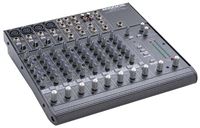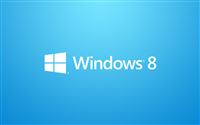 Even though Facebook has a billion users, there are still new people joining and at least one of the people who joined recently is reading this blog post. So I thought it would be good to do a blog post about my thoughts on privacy and Facebook.
Even though Facebook has a billion users, there are still new people joining and at least one of the people who joined recently is reading this blog post. So I thought it would be good to do a blog post about my thoughts on privacy and Facebook.
First of all, there are a ton of knobs for controlling your data in Facebook. Allow certain friends to see certain info, keep some things private from everyone, or approve any photo your tagged in. The list goes on and on and the list changes fairly silently in the background. Putting secret stuff on Facebook and trying to control it with their settings is a recipe for disaster. That’s how you get the crazy stories about somebody posting something about their boss and then getting fired because it leaked out.
Here’s an easy way to make sure nothing that you consider private ever leaks out: don’t put anything that you consider private into Facebook.
This starts from the minute you sign up and you are presented with a bunch of data fields. What’s your favorite book? Who are your relatives? What’s your birthday? What’s your hometown? Stop and ask yourself why you’re putting any of this data in there. I fill in some fields like my religious views and some favorite things I enjoy, but in general, if you wouldn’t stand on a stump in a park and yell it out, don’t type it in to those fields.
This guideline should continue to apply every day you’re on Facebook. If you wouldn’t show that picture to your boss, a hacker, or your family, don’t put it on Facebook (or anywhere on the Internet for that matter.)
So what is the bar for things that are ok to make public? That’s one that’s different for everyone. I live a fairly public life. I’ve been blogging daily for over 10 years so the thought of posting some photos on Facebook doesn’t bother me. But there are still things that I won’t put on the Internet like photos or text showing that I’m on vacation and won’t be in my home for x days. However, that’s something that lots of other people do and don’t feel weird about. I also don’t “like” very many things because it’s just more data that can be used to profile me. You need to figure out your own line. The nice thing about Facebook is that you can join, enter very little personal data and then kibitz. Nobody says you have to post anything, but if you’re friends with people, you can still see what they are up to.
It’s a great tool, but it can cause you a lot of trouble if you start relying on anything in the privacy settings to keep certain info from certain people. As soon as you put anything in digital form anywhere on a computer, you are opening yourself up to the potential that the world will know about it.

 Somehow I’ve turned into the A/V geek at church. We have a modest setup cobbled together from various donations throughout the years. The problem was that our equipment is up in the balcony so I had to go up there at various points in the service to adjust speaker levels and start/stop the DVD recording. That technically worked fine but was annoying to those who sat around me as I would be coming and going from my seat throughout the service. Here’s the plan that I laid out and recently completed:
Somehow I’ve turned into the A/V geek at church. We have a modest setup cobbled together from various donations throughout the years. The problem was that our equipment is up in the balcony so I had to go up there at various points in the service to adjust speaker levels and start/stop the DVD recording. That technically worked fine but was annoying to those who sat around me as I would be coming and going from my seat throughout the service. Here’s the plan that I laid out and recently completed: Tyla and I dropped Netflix streaming when they split the subscription from the discs. We’re among the minority that prefers discs though that won’t be the case forever. In the mean time, I’ve been enjoying the selection of streaming videos available for free on Amazon to anyone with a Prime membership. If you’re a Prime member, make sure you check this out! The quality is great, there’s an app on the Xbox360, and the selection is not too shabby. I’ve been using it to watch Top Gear (the UK version) and a couple other TV series.
Tyla and I dropped Netflix streaming when they split the subscription from the discs. We’re among the minority that prefers discs though that won’t be the case forever. In the mean time, I’ve been enjoying the selection of streaming videos available for free on Amazon to anyone with a Prime membership. If you’re a Prime member, make sure you check this out! The quality is great, there’s an app on the Xbox360, and the selection is not too shabby. I’ve been using it to watch Top Gear (the UK version) and a couple other TV series. Some of the buzz around Windows 8 is that Microsoft should let people go straight into the desktop mode without first landing on the new Windows 8 start screen. I can understand the desire to never ever change anything (while complaining that they’re not “innovating”), but this one is a bit silly. What’s the first thing you did in Windows 95 through Windows 7 when you started your computer? You either clicked one of your shortcut icons to start an app or you pressed the start button to find an app that way. It’s EXACTLY THE SAME with Windows 8. You can either click one of the shortcut icons (tiles) that are on your start screen, or you can find an app by typing and searching for it. If anything, you now have fewer clicks and you also get the added benefit of seeing a screen full of information that you’ve tailored to your interests.
Some of the buzz around Windows 8 is that Microsoft should let people go straight into the desktop mode without first landing on the new Windows 8 start screen. I can understand the desire to never ever change anything (while complaining that they’re not “innovating”), but this one is a bit silly. What’s the first thing you did in Windows 95 through Windows 7 when you started your computer? You either clicked one of your shortcut icons to start an app or you pressed the start button to find an app that way. It’s EXACTLY THE SAME with Windows 8. You can either click one of the shortcut icons (tiles) that are on your start screen, or you can find an app by typing and searching for it. If anything, you now have fewer clicks and you also get the added benefit of seeing a screen full of information that you’ve tailored to your interests. A lot has changed since the last article about the
A lot has changed since the last article about the  The Hobbit is out and is one of the first movies to offer a higher framerate than standard movies. There was a bunch of other relatively new tech in the theater. Here’s my review of each piece:
The Hobbit is out and is one of the first movies to offer a higher framerate than standard movies. There was a bunch of other relatively new tech in the theater. Here’s my review of each piece: If you use a Surface RT, you may have noticed that Flash only works on some sites. There is a whitelist built in and Flash will only work if the website is on that list. But what about sites like studio711.com? If you want to watch the Flash that is used here, you’ll need to do a little extra work. Of course you’ll be doing something that isn’t recommended by Microsoft so proceed at your own risk. Still willing to try it? Follow the steps at
If you use a Surface RT, you may have noticed that Flash only works on some sites. There is a whitelist built in and Flash will only work if the website is on that list. But what about sites like studio711.com? If you want to watch the Flash that is used here, you’ll need to do a little extra work. Of course you’ll be doing something that isn’t recommended by Microsoft so proceed at your own risk. Still willing to try it? Follow the steps at